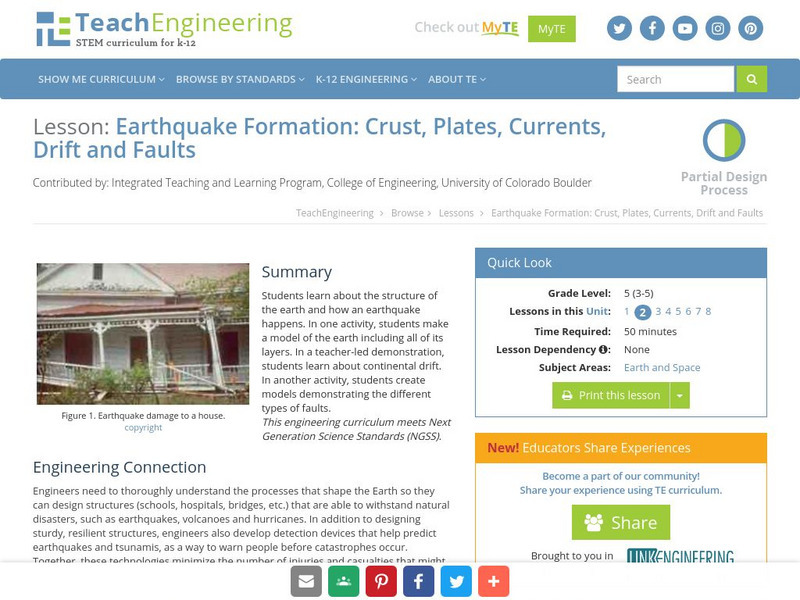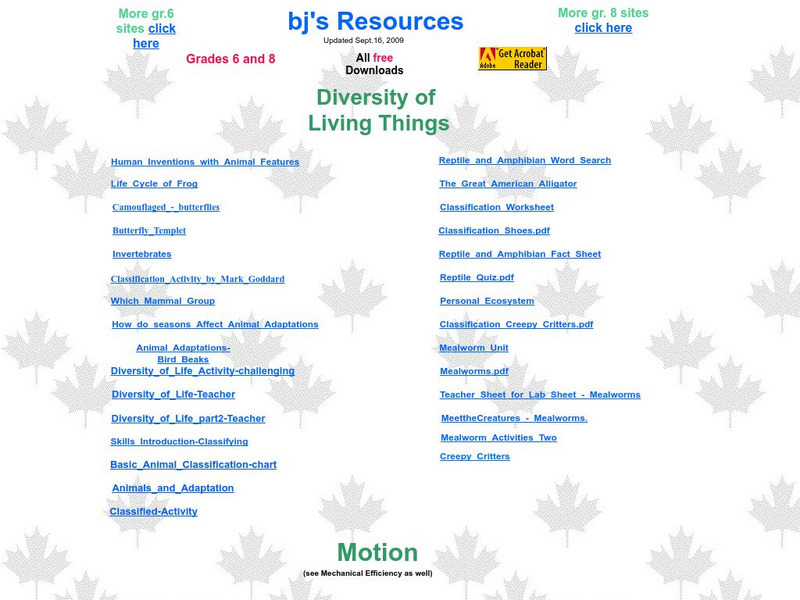Utah Education Network
Uen: Nhmu: Our Ancient Earth the Stratigraphy Cup
Activity provides students an opportunity to make a stratigraphy cup.
Rice University
Museums Teaching Planet Earth: What Is the Geosphere?
Describes Earth's layers, which make up the geosphere.
American Museum of Natural History
American Museum of Natural History: O Logy: Stuff to Do: Edible Earth
Take a look at the layers that make up our Earth: inner core, outer core, mantle, and crust. Then have fun making a model of the Earth's interior that you can eat up.
TeachEngineering
Teach Engineering: Searching for Bigfoot and Others Like Him
Cryptids, creatures of questionable existence, are used as a source of data to guide students into the creation of their own GIS data layer in Google Earth. The activity serves the purpose of a tutorial to teach students how to make data...
Science Education Resource Center at Carleton College
Serc: Let's Build the Earth!: The Structure of the Earth's Crust and Interior
For this activity, students will make observations then construct a "sample" model representation of the Earth's layers. They will compare and contrast the movement and material in each layer explaining the location and what it contains.
Scholastic
Scholastic: Study Jams! Science: Weather & Climate: Earth's Atmosphere
A video and a short multiple-choice quiz on the composition of and the layers in Earth's atmosphere.
CK-12 Foundation
Ck 12: Earth Science: Correlation Using Relative Ages
[Free Registration/Login may be required to access all resource tools.] How rock layers in different locations can be connected to make pictures of a region's geology.
CK-12 Foundation
Ck 12: Earth Science: Correlation Using Relative Ages
[Free Registration/Login may be required to access all resource tools.] How rock layers in different locations can be connected to make pictures of a region's geology.
Society for Science and the Public
Science News for Students: Riding to Earth's Core
Ever thought about riding to the core of the earth? Well geophysists David Stevenson has. He has even come up with a way to make a hole, but he has run into some other complications. Maybe you can be the one to solve those problems.
American Geosciences Institute
American Geosciences Institute: Earth Science Week: Oil Trap Model
Students make and study a 3-D model of a cross section of the earth where oil has formed.
Other
Moorland School: Earth Science Zone: The Earth's Atmosphere
Learn about the properties of the thin layer of gas that surrounds the Earth. Understand the mixture of gases that make up the atmosphere as well as the different layers. Also explained are issues that affect the atmosphere like the...
TeachEngineering
Teach Engineering: Natural Disasters
Students are introduced to our planet's structure and its dynamic system of natural forces through an examination of the natural hazards of earthquakes, volcanoes, landslides, tsunamis, floods and tornados, as well as avalanches, fires,...
Other
Prince George's Community College: Reading the Rock Record [Pdf]
This is an in-depth activity where students create a rock layer formation using different colors of playdough and investigate the types of folds and rock formations that might occur. They take core samples through anticlines and...
Smithsonian Institution
National Museum of Natural History: Global Volcanism Program: This Dynamic Planet
Interactive activity that allows the learner to make their own regional map using layers of their choice such as volcanoes, craters, plate tectonics, or earthquakes. This map of the Earth zooms in and out, highlights essential processes,...
Scholastic
Scholastic: Study Jams! Science: Lithosphere, Hydrosphere, and Atmosphere
A slideshow and a short multiple-choice quiz on the rock surface of the Earth, its water, and the gas layers that surround it.
Khan Academy
Khan Academy: What Is the Biosphere?
This article explains that as our knowledge of life on the planet evolves, we've come to use the word biosphere as a way of explaining the entire intertwined network of life on Earth. This concept combines an understanding of geology,...
Science Buddies
Science Buddies: Under Pressure: Sand Under Lateral Compression
Here's a project that involves a different kind of sandbox than the ones you usually think of. This one has a moving wall inside, acting like a piston, to compress the sand. You can make layers using two different colors of sand, and...
TeachEngineering
Teach Engineering: Air Pollution
Students are introduced to the concept of air quality by investigating the composition, properties, atmospheric layers and everyday importance of air. They explore the sources and effects of visible and invisible air pollution. By...
TeachEngineering
Teach Engineering: Earthquake Formation
Students learn about the structure of the earth and how an earthquake happens. In one activity, students make a model of the earth including all of its layers. In a teacher-led demonstration, students learn about continental drift. In...
My Science Site
Life Systems: Cells, Tissues, Organs
Extensive site for teachers provides some helpful resources that pertain to plant and animal cells. Includes a microscope diagram as well as plant, animal and pond labs. Also contains links to structures and mechanisms, matter and...

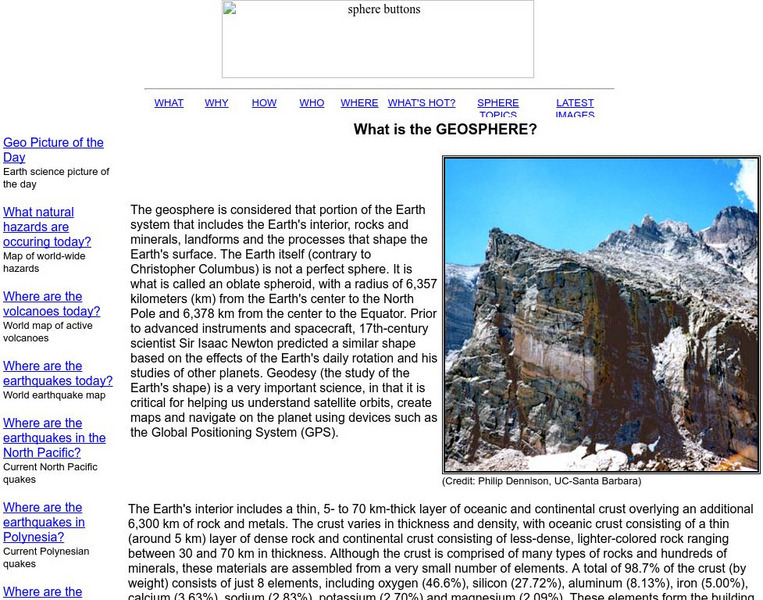
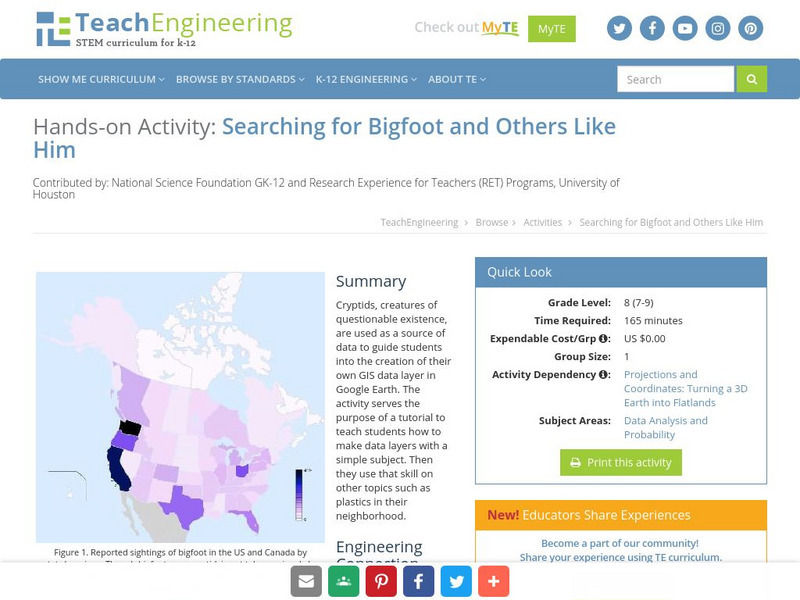
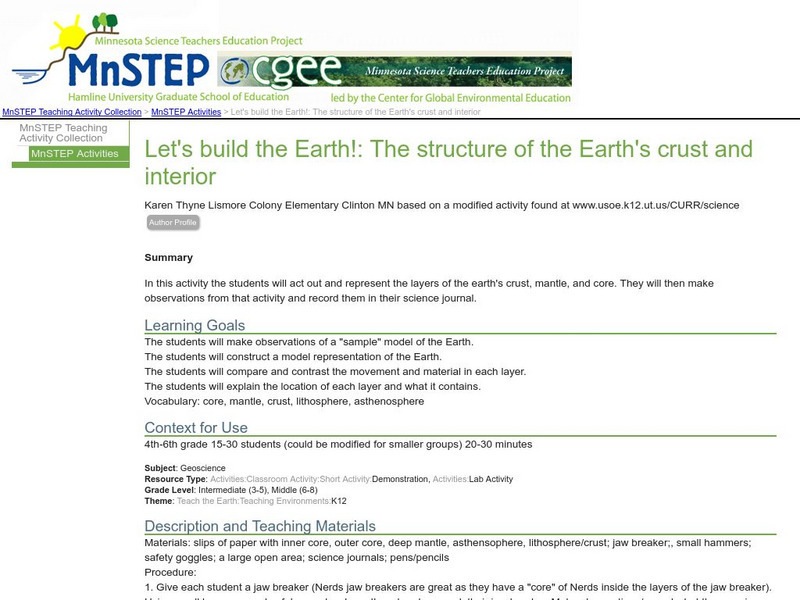
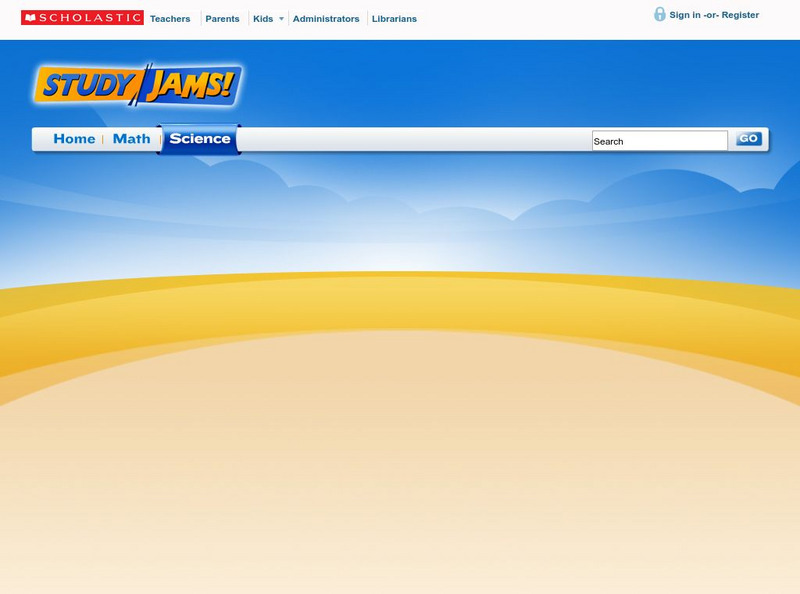

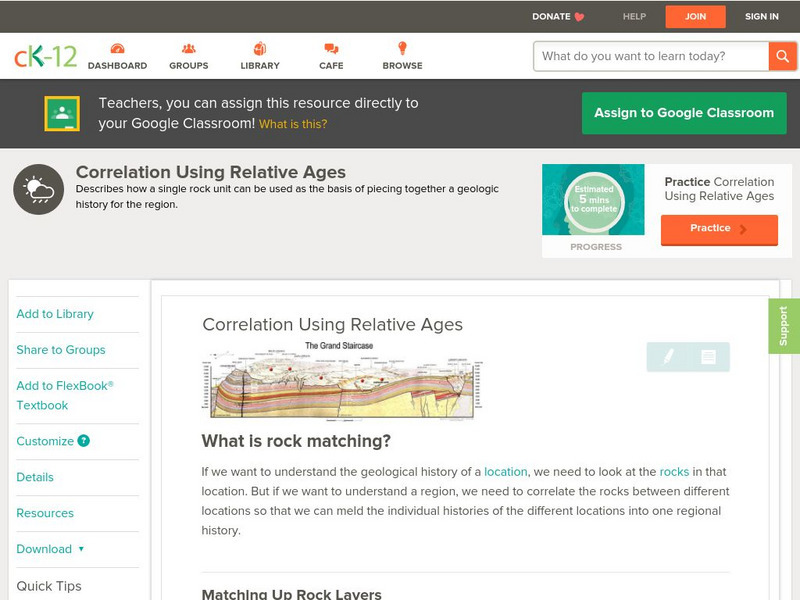

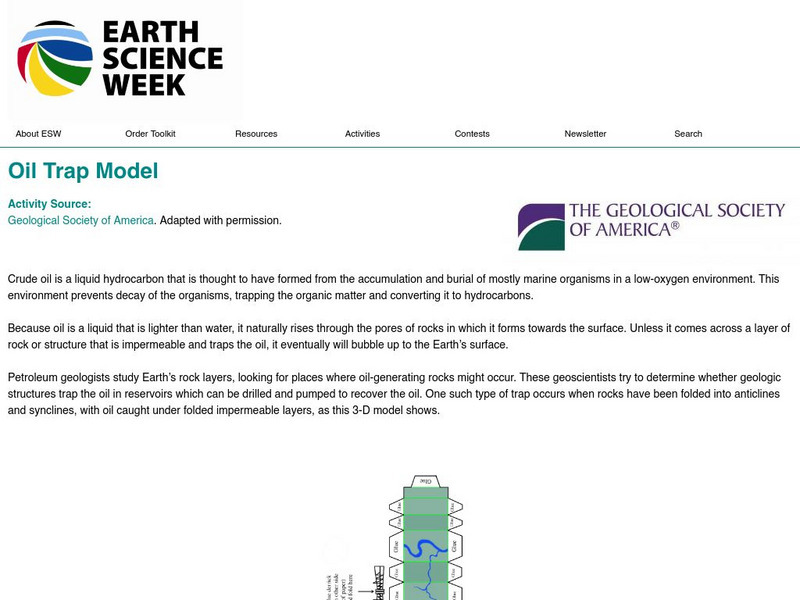
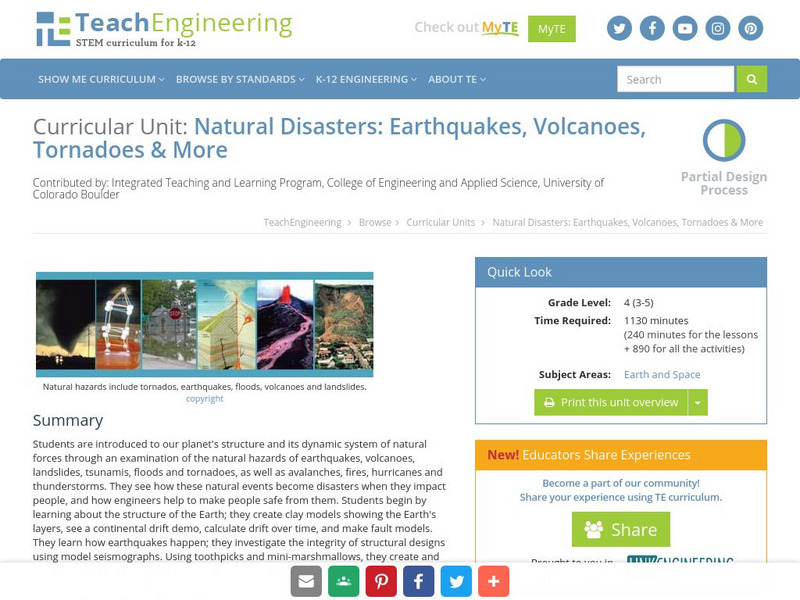
![Prince George's Community College: Reading the Rock Record [Pdf] Activity Prince George's Community College: Reading the Rock Record [Pdf] Activity](http://content.lessonplanet.com/resources/thumbnails/410006/large/bwluav9tywdpy2symdiwmduymc0xotawms0xn3i0zzvplmpwzw.jpg?1589984663)




